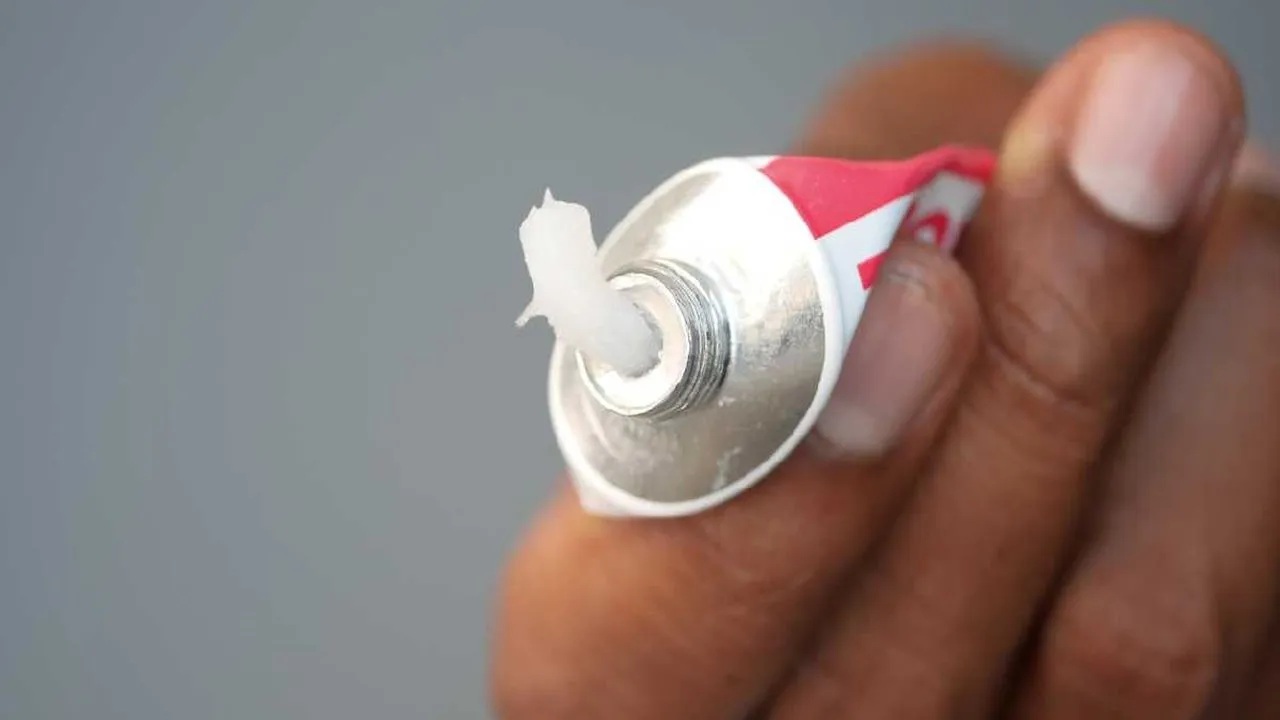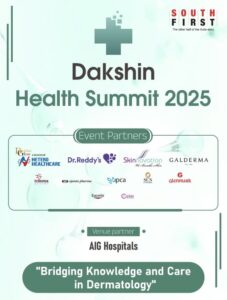Dermatologists reveal how unregulated steroid chemical-cocktail creams are harming users nationwide.
Published Nov 24, 2025 | 6:00 AM ⚊ Updated Nov 24, 2025 | 6:00 AM

medical representatives often passed on half-knowledge to non-dermatologists, who then prescribed these formulas inappropriately.
Synopsis: Dangerous combinations that have the potential to harm than good are being pedalled in the market as skin care creams. Even if they are banned, they return to the market shelves in a new avatar with very few changes, much to the chagrin of dermatologists.
What looks like an ordinary squeeze tube of skin cream in pharmacies is often a chemical cocktail — a chaotic mix of super-potent steroids, antibiotics, antifungals, and bleaching agents, blended with no scientific rationale.
Dermatologists, who attended South First’s Dakshin Health Summit-2025, said such irrationally fixed-dose combinations (FDCs) have become one of the most dangerous threats to skin health across the subcontinent.
Dr Rakesh Kumar was stunned by his findings. “A simple search on major pharmacy apps showed 70 to 80 brands of steroid combination creams. And the most shocking part is that the super-potent steroids are the most commonly used in these mixes,” he said while speaking at a session on ‘Steroid Abuse in Dermatology’.
Clobetasol, a Class 1 super-potent steroid meant for limited and specific use, has been blended with neomycin, miconazole, gentamicin, hydroquinone, and even contact-sensitising agents.
“There is absolutely no logic in these mixtures,” Dr Rakesh said. “Yet they are sold for everything— fairness, pigmentation, acne, fungal infections. It’s endless, and it’s dangerous,” he added.
Alarmingly, banned combinations returned to the market easily and with impunity. Dr Rajetha Damisetty, Dermatologist and Director of Mohana’s Skin and Hair Clinic, explained that once a Fixed-Dose Combination (FDC) was prohibited, manufacturers just altered the label.

The second edition of the Dakshin Health Summit 2025 was held at the Asian Institute of Gastroenterology in Hyderabad on 9 November.
“They add a plus or minus, change one letter, alter the font or colour. Unless you subject it to a microscopic study, you won’t know it’s the same, banned formula,” she said.
Dr Damisetty recalled how one infamous combination of clobetasol, ofloxacin, ornidazole and terbinafine was removed from circulation. It reappeared shortly with a barely noticeable alteration.
“This is how the game is being played: ban one, and three more come back dressed differently,” she explained.
Panellists blamed regulatory loopholes for the trend. Manufacturers bypassed central drug approvals by obtaining local state licences, enabling the production of creams that should never have been cleared for sale.
“That’s how so many momentasone-containing fairness creams were born,” Dr Damisetty said. “No oversight, no scrutiny, just relabelled and unleashed.”
Clinics have been regularly witnessing the consequences of this reckless mixing. Fungal infections that once responded promptly to antifungals now linger, recur and mutate.
“Tinea was the simplest infection to treat,” said Dr Sudha Rani, Professor and Head of the Department at GMC Hyderabad.
“Now it’s harder than treating psoriasis,” she said. Dr Rani described patients arriving with bags full of creams they had used, often containing multiple steroid-antifungal-antibiotic combinations, and infections so modified that standard doses no longer work.
Across the country’s border, Bangladesh, too, has been facing the same crisis. Dr Md Saiful Islam Bhuiyan, Skin Specialist from Dhaka, detailed the rising antifungal resistance in his country.
“We are seeing 64 percent resistance to terbinafine and 28 percent resistance to itraconazole in chronic dermatophyte cases. Abuse is in all forms–topical, injectables, combinations,” he said.
Dr Bhuiyan revealed that in some places, reserve antifungals such as voriconazole meant for life-threatening systemic infections were being used casually for skin disease.
“This is extremely dangerous,” he warned.
Experts agreed that aggressive marketing, poor regulations, and the public’s desire for instant results — not clinic need — were fuelling the surge in irrational combinations.
Dr Rani noted the widespread misuse of such combinations among non-dermatologists. “Every specialist–gynaecologists, general physicians, even super-specialists- sees a skin lesion and immediately prescribes a steroid combination. This is how the epidemic was created,” she said.
Dermatologists also noted how corporate marketing and misinformation further spread these irrational creams.
According to Dr Amarendra Pandey, Dermatologist and Laser Surgeon from Jabapur, medical representatives often passed on half-knowledge to non-dermatologists, who then prescribed these formulas inappropriately.
“They carry that information to quacks, to general practitioners, to non-medical practitioners, and that leads to widespread resistance,” he said.
The panel called for decisive reforms: strict prescription control for all topical steroids, clear bans on irrational combinations, and tighter surveillance of local manufacturing licences.
“These creams are not medicines,” one panellist summarised. “They are unscientific chemical cocktails packaged as quick fixes. And unless we stop them, we will keep seeing infections that can’t be treated, faces that can’t be repaired, and drugs that no longer work.”
(Edited by Majnu Babu).
